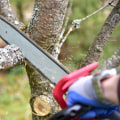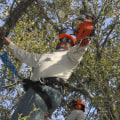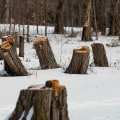Pruning trees and shrubs is a fundamental part of maintaining a healthy, vibrant landscape. However, the timing of this task is critical, as it can significantly impact plant health, growth, and appearance. Pruning at the wrong time can stress plants, delay blooming, or even invite pests and diseases. By understanding the optimal times for pruning various types of trees and shrubs, you can ensure your plants thrive and maintain their aesthetic appeal.
General Guidelines for Pruning Timing
The best time to prune largely depends on the type of tree or shrub and its growth cycle. For most plants, late winter or early spring is ideal because they are still in dormancy. During this time, pruning wounds heal more quickly as the plant begins its growth phase. Additionally, pruning in winter allows you to better see the plant’s structure without the obstruction of leaves, enabling more precise cuts.
Spring-flowering shrubs, such as lilacs and forsythia, are an exception. These plants should be pruned immediately after they bloom. Pruning them in winter or early spring would remove buds that formed the previous year, diminishing their flowering potential. Summer-flowering plants, on the other hand, benefit from late-winter pruning, as they bloom on new growth.
Timing for Deciduous Trees
Deciduous trees, which lose their leaves in the fall, are best pruned during their dormant period in late winter. This timing minimizes stress and allows the tree to focus on new growth when spring arrives. It’s also easier to identify dead, damaged, or crossing branches when the tree is leafless. Some species, like maple or birch, may "bleed" sap if pruned in late winter, but this is harmless and won’t affect their health.
Evergreen Trees and Shrubs
Evergreen trees, such as pines and spruces, have different pruning needs. Light pruning can be done throughout the year to maintain shape, but avoid heavy pruning during late summer or fall, as this can stimulate new growth that may not harden off before winter. Early spring is generally the best time for heavier pruning, as it allows new growth to cover the cuts quickly.
Summer Pruning
While winter and early spring are often considered the best times for pruning, there are occasions when summer pruning is beneficial. This is especially true for controlling growth or shaping plants after their growth spurt in spring. Summer is also an excellent time to remove dead or damaged branches, as these are more visible when the tree is in full leaf.
Avoiding Fall Pruning
Fall is typically the least favorable time for pruning. During this season, trees and shrubs begin to enter dormancy, and pruning can stimulate new growth that is unlikely to survive the winter. Additionally, wounds created in the fall heal more slowly, leaving the plant vulnerable to disease and pest infestations.
Professional Pruning Services
Pruning trees and shrubs can be a daunting task, particularly for large trees or intricate landscapes. Hiring professionals ensures that the job is done safely and correctly. Companies like Lindquist Tree and Landscaping offer expert pruning services tailored to the specific needs of your plants and trees. Their expertise in understanding plant biology, growth patterns, and pruning techniques can make a significant difference in maintaining the health and beauty of your outdoor spaces.
Factors That Influence Pruning Timing
Several factors influence when to prune, including the plant’s age, condition, and location. Young trees may need regular pruning to establish a strong structure, while mature trees may only require occasional maintenance. Additionally, trees and shrubs in urban environments may need more frequent pruning to manage space, ensure safety, or address damage from weather or human activity.
The Role of Pruning in Plant Health
Pruning is more than just an aesthetic practice; it plays a vital role in the overall health of trees and shrubs. Removing dead or diseased branches reduces the risk of decay and prevents the spread of infections. Thinning dense growth improves airflow and light penetration, reducing the likelihood of fungal diseases. Proper pruning also encourages stronger, healthier growth by redirecting the plant’s energy to vital areas.
Conclusion
The timing of pruning trees and shrubs is a critical factor in ensuring their health, growth, and appearance. By following general guidelines based on plant type and growth cycles, you can maximize the benefits of this essential practice. For those who find the process challenging or have large-scale needs, professional services provide valuable expertise to keep your landscape in top condition. Whether you are shaping ornamental shrubs, managing fruit trees, or maintaining towering evergreens, understanding when to prune ensures that your plants flourish and enhance your outdoor space year-round.


